9 Ways To Protect Your Pup When The Temperature Drops
All dog owners want to make sure our pets stay safe and cozy all winter long, and when the temperatures drop there are some things we need to be aware of because the cold can affect our fur babies differently than it affects us humans.
If you are planning on spending time with your pup outdoors this winter, even for daily walks, here are some ways you can protect them when the weather outside is frightening.
9 Ways To Protect Your Pup When The Temperature Drops
1: If you're cold, they're cold, bring them inside.
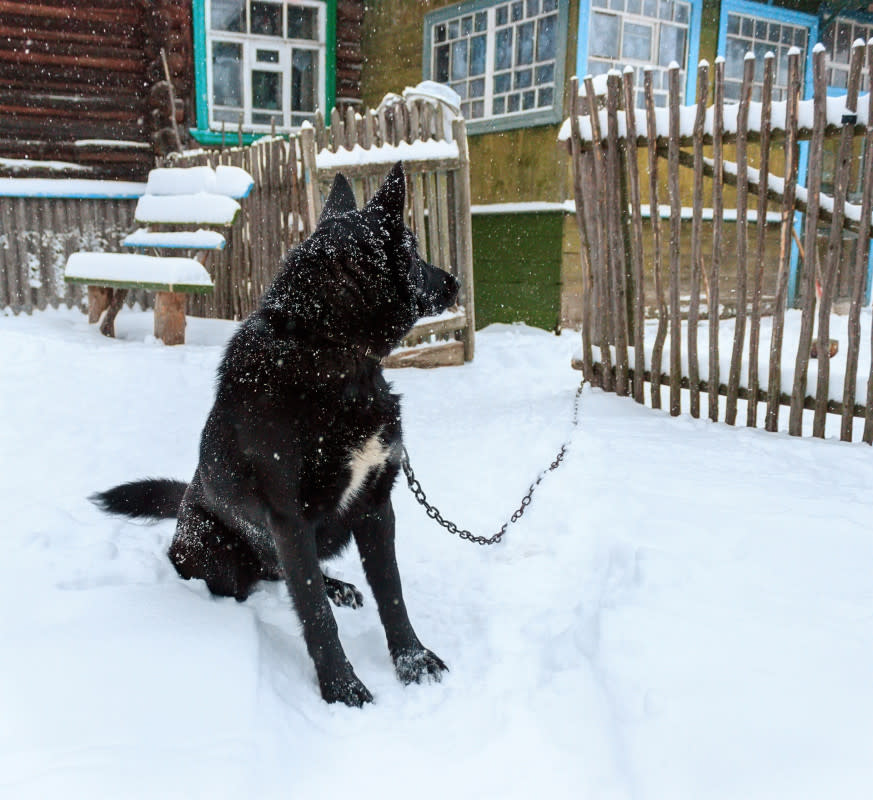
Lyubov_Nazarova/Shutterstock
You've probably seen this meme floating around social media (And the best ones shows a pack of raccoons wanting to come indoors!) but there's a lot of truth to it. Even though our dogs are covered in fur they still get cold outside, and prolonged exposure to the cold can cause hypothermia in even the furriest of dogs. Let them out to do their business and then bring them back inside.
2: Know what to look for when it comes to hypothermia and frostbite
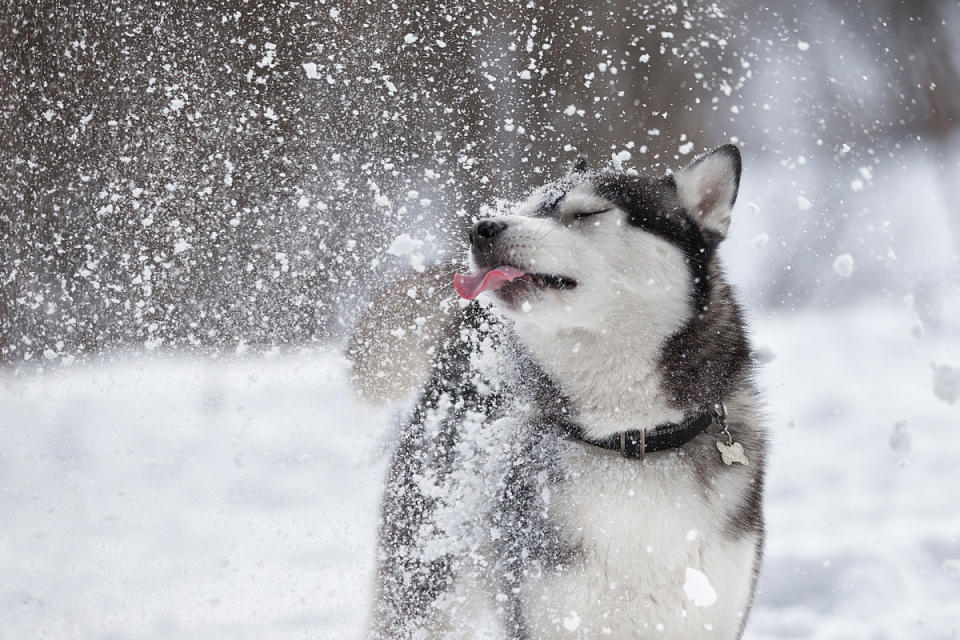
Vivienstock/Shutterstock
If your dog is shivering that's a big warning sign. Dogs that are having trouble walking, trouble breathing, have skin and fur that feels cold to the touch and are acting lethargic could all be showing signs of hypothermia or frostbite. It's especially dangerous if their fur has somehow gotten wet and they are left in the cold. From a June PetHelpful article, if your dog's cold paws are accompanied by other symptoms, such as lethargy, difficulty walking, pale gums or trouble breathing, it's important to see a vet as soon as possible. These could be signs of a more serious issue.
3: Consider a coat
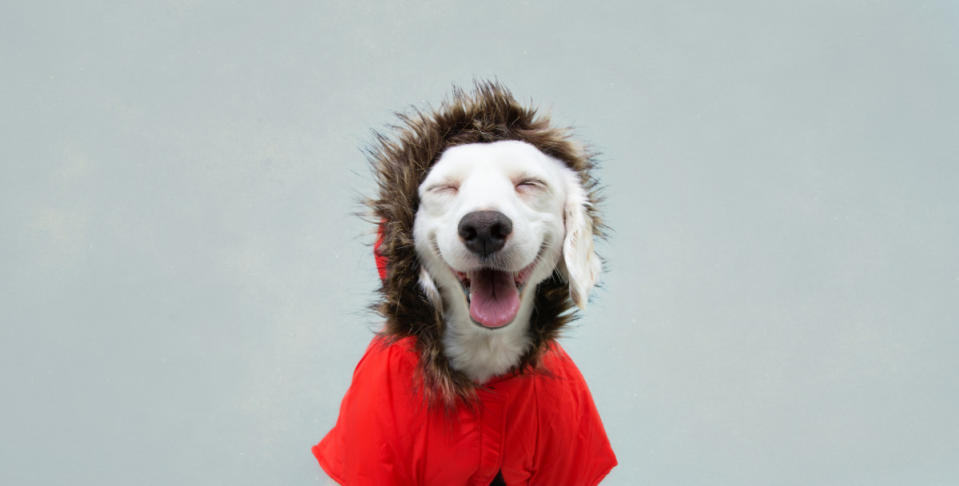
smrm1977/Shutterstock
Not all dogs need the extra protection a coat can provide, but shorter haired breed dogs like Greyhounds and Whippets, elderly dogs and dogs with medical conditions can all benefit from the warmth a coat can provide. As dogs age they have a more difficult time regulating their body temperature so a coat can help keep your dog cozy.
Related: Bernese Mountain Dog's Elation Over Winter Snow Storm Is Perfect
4: Think about booties.
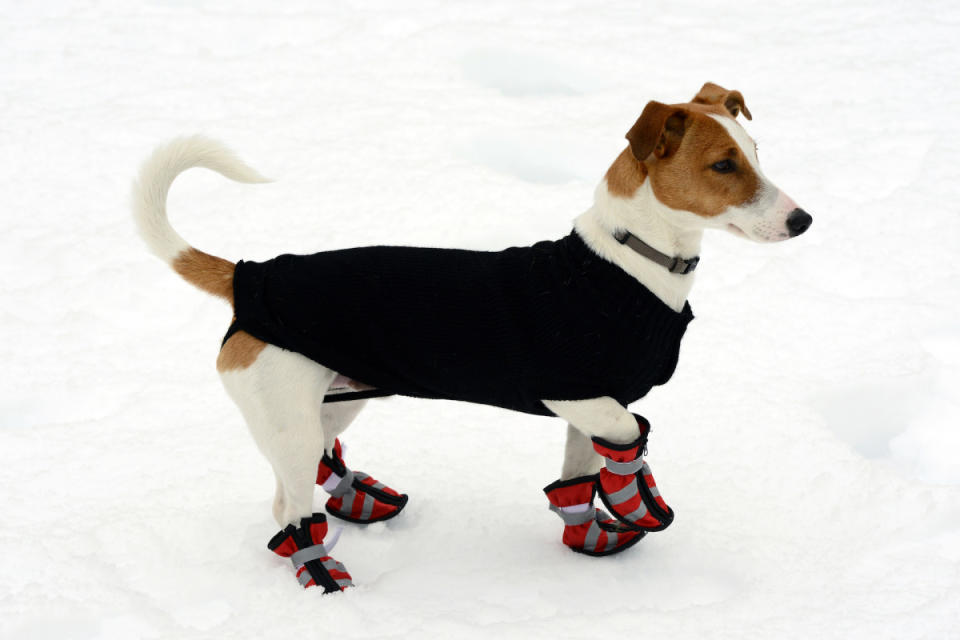
Photology1971/Shutterstock
Not only are dog booties and shoes adorable, they can help your pup from falling by adding traction to walking on slippery sidewalks and driveways. They also protect your pup's paws from things like rock salt which can get trapped in their paws and cause injury and infection.
5: Watch their diet
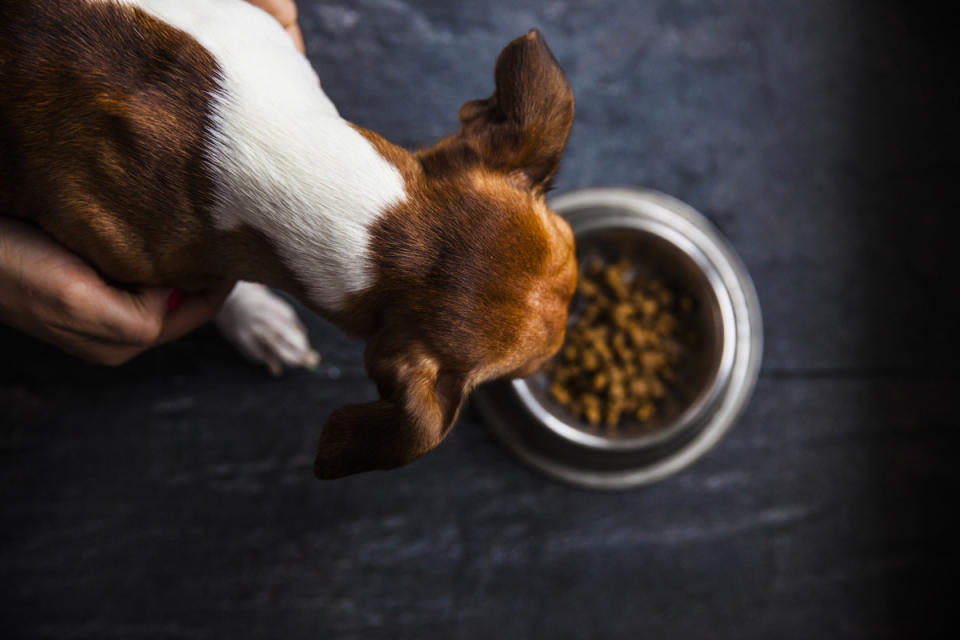
Alena Lebedzeva/Shutterstock
According to Pet MD, studies suggest that dogs subject to low temperature exposure need two to three times the normal calories as they need at a more moderate temperature. If your dog spends a lot of time outside in the cold weather, they need more calories to help them regulate their body heat. On the other hand, if your dog will be exercised less due to cold temperatures, they may need less calories. Check with your vet to get their opinion for your specific pup and their winter calorie requirements.
Related: Italian Greyhound's Snowy Adventure Has Us Obsessed
6: Clean up antifreeze right away.
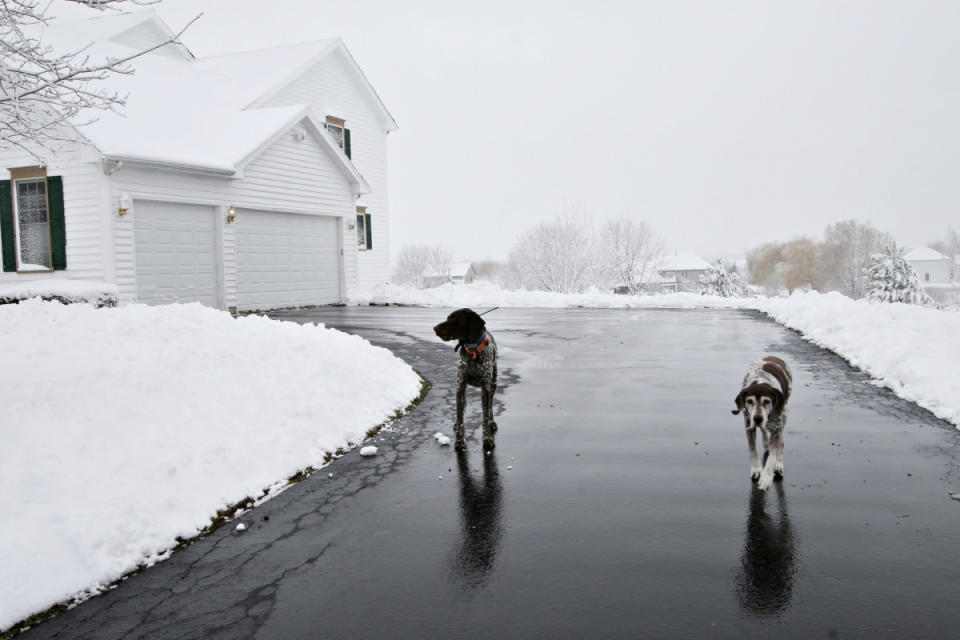
Charlene Bayerle/Shutterstock
Antifreeze can be extremely dangerous to dogs. It can damage their kidneys and can cause death, even after only a small amount has been licked from their paws after they walk in it. If you see any antifreeze on driveways, keep your dog away. if it's your driveway, clean it up immediately. The Kennel Club says, "If you think your dog has drunk antifreeze, contact your vet as soon as possible. Do not wait for your dog to become unwell, as delayed treatment may not be as effective. Even if your dog drank antifreeze and seems ok it’s important you contact your vet straight away."
7: Keep your dog hydrated on walks
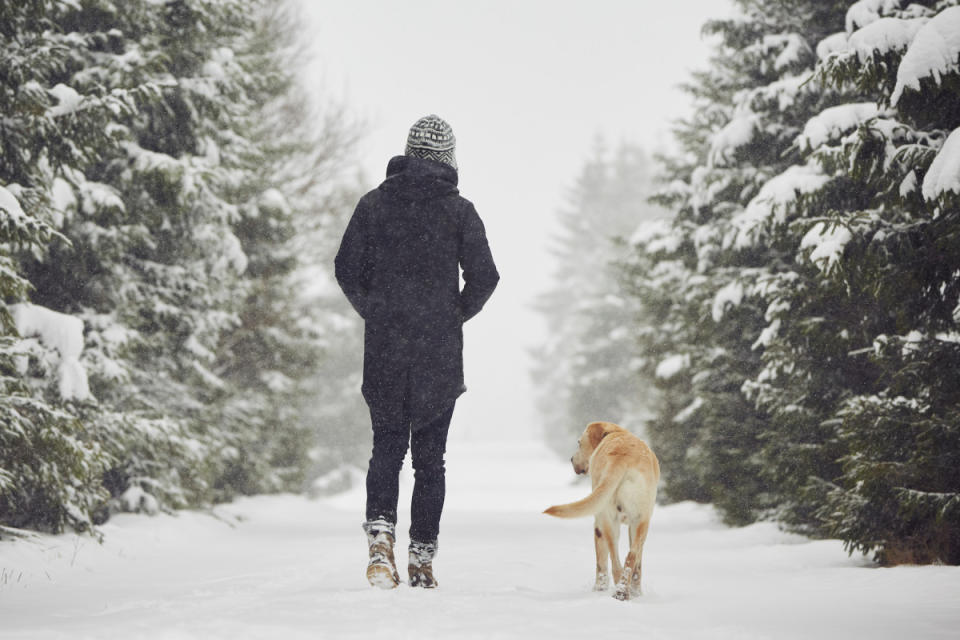
Jaromir Chalabala/Shutterstock
It's easy to forget your dog still needs water when they are on a walk in the wintertime. Even though they may not get hot they still need to stay hydrated.
8: Be careful where you walk.
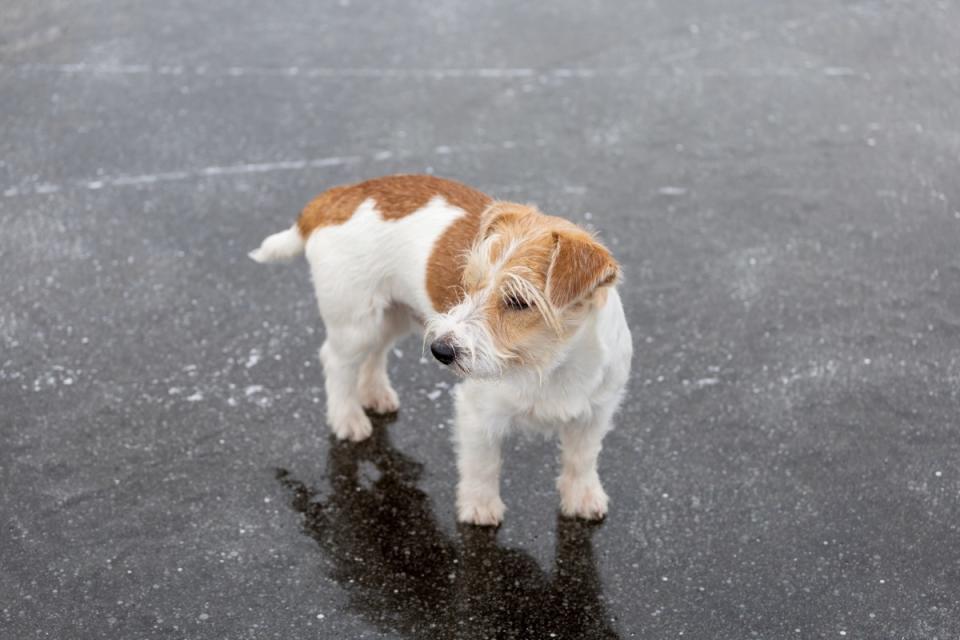
woodHunt/Shutterstock
A very good rule of thumb for walking on frozen ponds or lakes is that you should never do so unless the ice is frozen enough to drive a snowmobile on, which is a minimum of five inches deep.
9: Beware of inside dangers too.
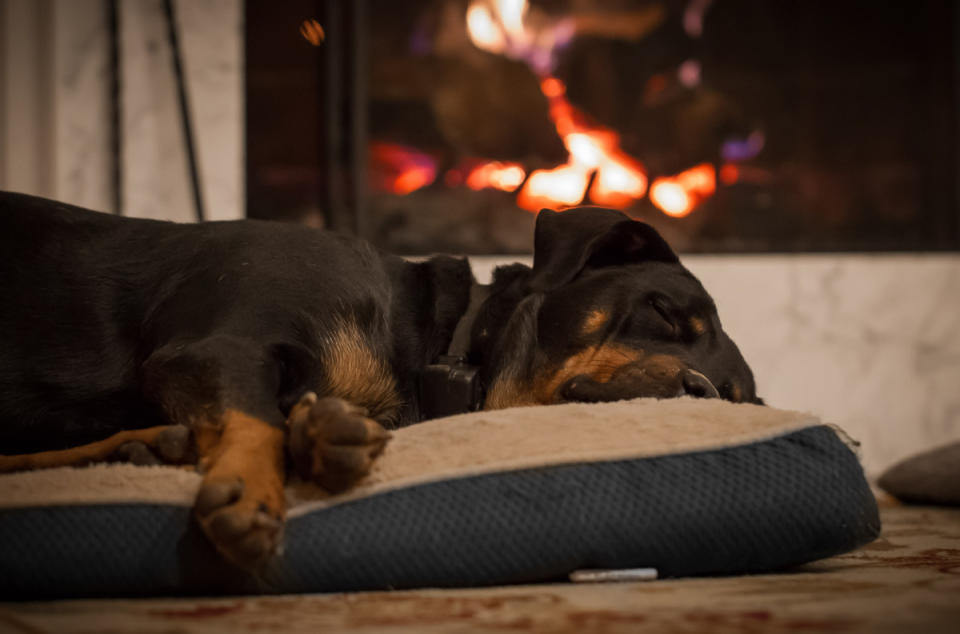
jdross75/Shutterstock
There's nothing cozier than a dog curled up in front of the fireplace, until an ember flies out and catches their floofy tail on fire. If your fireplace has a mesh screen you need to keep your dog (and cat!) from napping in front of it. A glass fireplace enclosure should be safer, unless your dog gets burned without realizing it. The same with space heaters and radiators.
Looking for more PetHelpful updates? Follow us on YouTube for more entertaining videos. Or, share your own adorable pet by submitting a video, and sign up for our newsletter for the latest pet updates and tips.

